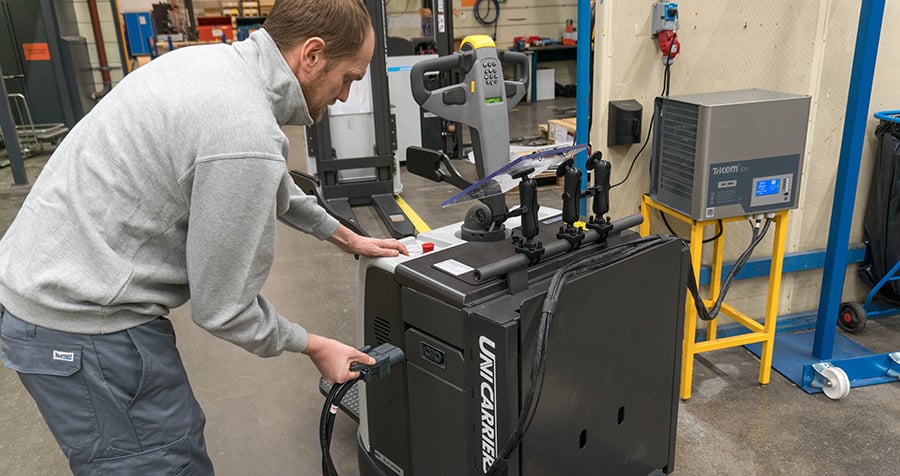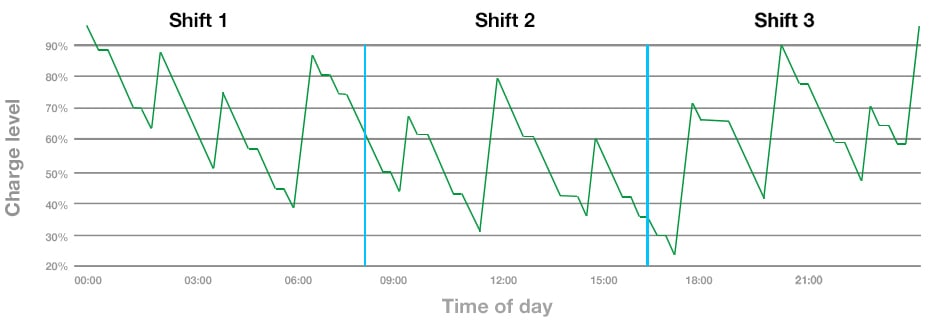
Battery changeover is a necessary pain for most operations that use electric trucks. Changing the battery involves removing the forklift from its ordinary operation and taking it to a purpose-built battery changeover area or a larger battery room. Here, the extremely heavy spent battery must be removed and connected to the charger, and a new battery removed from the charger and connected to the truck.
Special equipment is required to make the battery change possible, like a battery roller that can push the new battery into the compartment while pushing the old one out, or a specially-adapted pallet truck with an attachment designed for handling batteries. On top of all this, lead-acid batteries require regular fluid top-ups, cleaning and maintenance to work effectively and safely, and ventilation systems are essential to stop the build-up of explosive hydrogen gas produced during charging.
With all of these factors to consider, it's unsurprising that Li-ION batteries are becoming a popular energy solution for forklifts.
This same type of battery technology powers your phone, computer, and maybe even your car or bicycle — and it can be used in forklift batteries too. Compared to traditional lead-acid batteries they are practically maintenance-free and don't produce gas while charging, meaning there is no need for costly ventilation systems or charging rooms.
 Charging a Li-ION truck battery is as easy as plugging in the charging cable - no battery removal needed.
Charging a Li-ION truck battery is as easy as plugging in the charging cable - no battery removal needed.
However, the benefit that convinces most companies is the possibility of opportunity charging.
Unlike traditional forklift batteries, Li-ION batteries can be topped up during short charging stops throughout the day. The driver can charge the battery for 15 minutes during a break, and because there's no gassing, the chargers can be placed anywhere in the facility. When it's time to get back to work, the driver just unplugs the battery and drives away. These short breaks, well-placed throughout the day, can keep the battery charged to a good level and let you work multiple shifts on one battery.
 This operational profile shows how short charging periods, placed throughout the day, can allow one battery to last three shifts without a changeover.
This operational profile shows how short charging periods, placed throughout the day, can allow one battery to last three shifts without a changeover.
Short periods of driver downtime that were once totally unproductive can instead be used as smart charging stops. This means that more of the driver's day can be spent on productive work, rather than on time-consuming battery changeovers.
Opportunity charging might not be necessary in every materials handling operation, but when properly used, it can make work more efficient, more productive and much more safe.
To find out more about the benefits of Li-ION technology and how UniCarriers can help you with it, click the button below to get our free Li-ION guide. Just fill in the short form on the next page and it's yours to keep.







































Comment